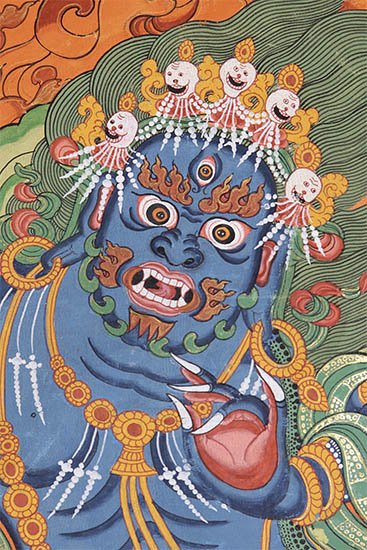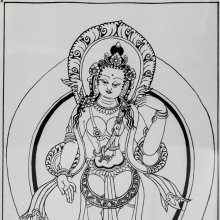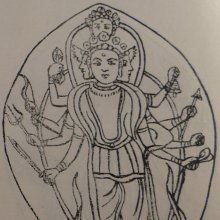Devadevata, Devadevatā: 1 definition
Introduction:
Devadevata means something in Buddhism, Pali. If you want to know the exact meaning, history, etymology or English translation of this term then check out the descriptions on this page. Add your comment or reference to a book if you want to contribute to this summary article.
Images (photo gallery)
In Buddhism
Tibetan Buddhism (Vajrayana or tantric Buddhism)
Source: archive.org: The Indian Buddhist IconographyDevadevatā (देवदेवता) or Devadevatālokeśvara refers to number 72 of the 108 forms of Avalokiteśvara found in the Machhandar Vahal (Kathmanu, Nepal). [Machhandar or Machandar is another name for for Matsyendra.].
Accordingly,—
“Devadevatā is similar to [Amoghapāśa Lokeśvara], with this difference that here the god carries the Vajra, the bow, the Triśūla and the sword in his four right hands, and the bell, the arrow, the jewel (?) and the noose in his left.—Amoghapāśa Lokeśvara is four-faced and eight-armed and stands on a lotus. He carries in his four right hands the Vajra, the sword, the goad and the bow, while the four left carry the Ghaṇṭā, the Tridaṇḍī, the noose and the arrow”.
The names of the 108 deities [viz., Devadevatā] possbily originate from a Tantra included in the Kagyur which is named “the 108 names of Avalokiteshvara”, however it is not yet certain that this is the source for the Nepali descriptions. Tibetan Buddhism includes schools such as Nyingma, Kadampa, Kagyu and Gelug. Their primary canon of literature is divided in two broad categories: The Kangyur, which consists of Buddha’s words, and the Tengyur, which includes commentaries from various sources. Esotericism and tantra techniques (vajrayāna) are collected indepently.
See also (Relevant definitions)
Starts with: Devadevatalokeshvara, Devadevatarcana.
Full-text: Devadevatalokeshvara, Devata.
Relevant text
Search found 1 books and stories containing Devadevata, Devadevatā; (plurals include: Devadevatas, Devadevatās). You can also click to the full overview containing English textual excerpts. Below are direct links for the most relevant articles:
The Indian Buddhist Iconography (by Benoytosh Bhattachacharyya)

